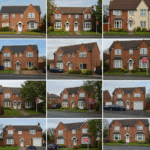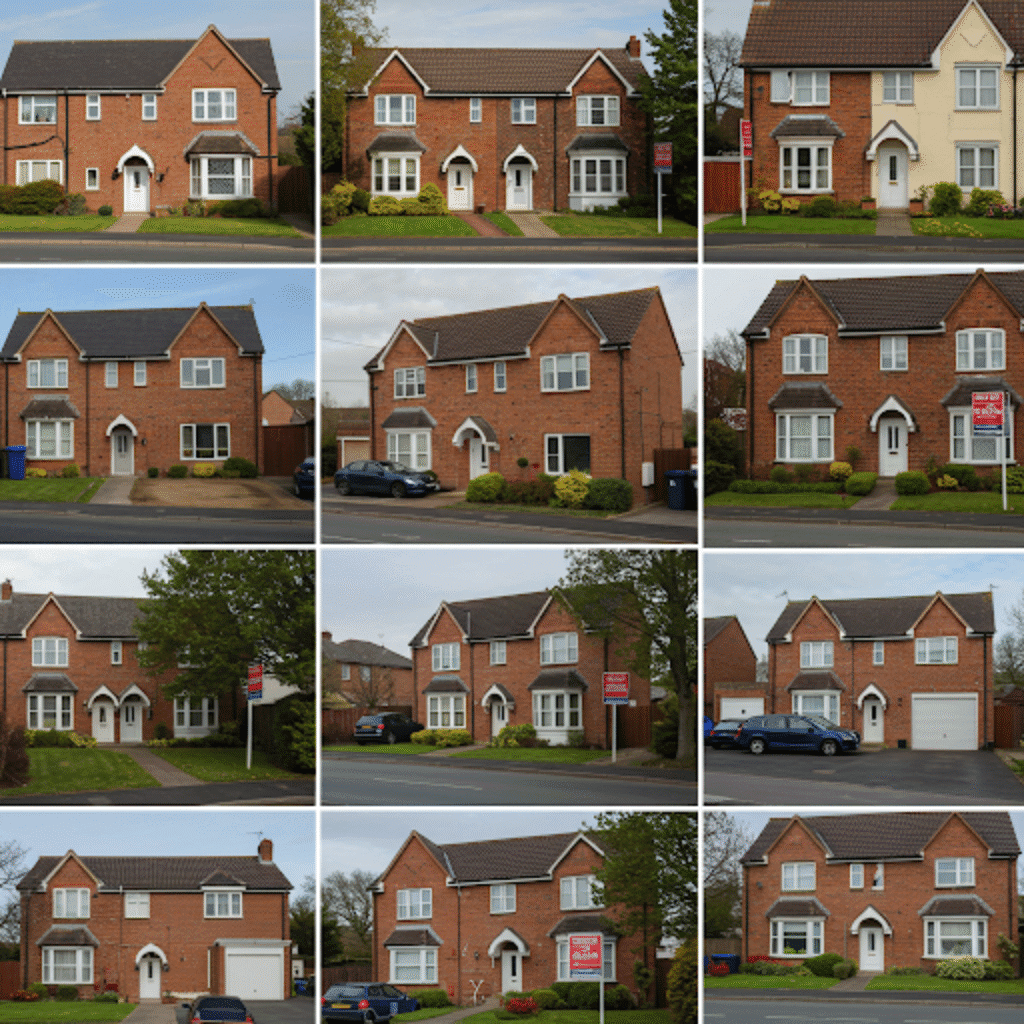
Finding Your Perfect Home: A Guide to Houses for Sale in Wakefield
Nestled in the heart of West Yorkshire, Wakefield stands as a city rich in history, culture, and opportunity. Once a vital hub during the Industrial Revolution, particularly known for its coal mining and textiles, Wakefield has gracefully transitioned into a modern, vibrant city that retains its unique character and strong sense of community. For those considering a move, the prospect of finding houses for sale in Wakefield offers an exciting journey into a diverse and appealing property market. Whether you’re a first-time buyer, a growing family seeking more space, or someone looking to downsize in a convenient and engaging location, Wakefield presents a compelling case.
But why Wakefield? What makes this cathedral city stand out in the bustling landscape of Northern England? It’s a blend of connectivity, affordability (relative to larger neighbouring cities like Leeds), cultural attractions, green spaces, and significant regeneration efforts that have breathed new life into its urban fabric. This guide aims to delve into the Wakefield property market, exploring its diverse neighbourhoods, property types, and the lifestyle it offers potential homeowners.
Why Put Down Roots in Wakefield?
Choosing a place to live is about more than just bricks and mortar; it’s about the lifestyle, the community, and the opportunities available. Wakefield scores highly on multiple fronts.

- Strategic Location and Connectivity: Wakefield boasts an enviable location. Situated near the intersection of the M1 and M62 motorways, it offers excellent road links across the north and the rest of the UK. Leeds is just a short drive or train ride away, making it ideal for commuters. Wakefield Westgate station is a key stop on the East Coast Main Line, providing direct services to London King’s Cross in approximately two hours, as well as frequent trains to Leeds, Sheffield, Doncaster, and Manchester. Wakefield Kirkgate station offers further regional connections. This connectivity is a major draw for professionals and families alike.
- Rich History and Culture: Wakefield’s history stretches back centuries, evident in its stunning gothic Cathedral with the tallest spire in Yorkshire. Beyond the cathedral, the city is home to world-class cultural venues. The Hepworth Wakefield, an award-winning art gallery showcasing the work of Barbara Hepworth and other modern British artists, sits dramatically on the waterfront. Yorkshire Sculpture Park, an internationally renowned open-air gallery set in the stunning grounds of Bretton Hall Estate, is just a short drive away. The National Coal Mining Museum for England, offering a poignant insight into the region’s industrial past, is also nearby.
- Green Spaces and Recreation: Despite its urban setting, Wakefield is blessed with abundant green spaces. Pugneys Country Park offers lakes for water sports, a miniature railway, and walking trails. Newmillerdam Country Park provides picturesque woodland walks around a central lake. Thornes Park, close to the city centre, features beautiful gardens, sports facilities, and a miniature railway. These spaces offer residents ample opportunities for recreation, relaxation, and enjoying the outdoors.
- Regeneration and Investment: Wakefield has benefited from significant investment and regeneration projects in recent years. The waterfront area around the River Calder has been transformed, centred around The Hepworth and incorporating residential developments and public spaces. The city centre continues to see improvements, enhancing the shopping and leisure experience. This ongoing development signals confidence in Wakefield’s future and contributes to its growing appeal.
- Affordability: While property prices have seen growth, Wakefield generally offers more affordable housing options compared to Leeds or Harrogate. This makes it an attractive proposition for buyers seeking better value for their money without compromising on amenities or connectivity.
Exploring Wakefield’s Diverse Neighbourhoods
Wakefield isn’t a monolithic entity; it’s a collection of distinct areas, each with its own character, housing stock, and price points. Understanding these differences is key to finding the right house for sale.
- City Centre Living: For those who crave convenience and proximity to amenities, the city centre offers a mix of apartments – from modern purpose-built blocks to conversions in historic buildings. Ideal for young professionals or downsizers, city centre living puts shops, restaurants, bars, cultural venues, and transport hubs right on your doorstep.
- Sandal: Located south of the city centre, Sandal (including Sandal Magna) is one of Wakefield’s most sought-after residential areas. Known for its attractive mix of properties, ranging from spacious Victorian and Edwardian homes to large detached houses and modern developments, Sandal appeals to families and professionals. Proximity to Sandal Castle ruins, Newmillerdam Country Park, good schools, and local amenities adds to its desirability. Property prices here tend to be higher than the Wakefield average.
- Outwood: Situated to the north of Wakefield, Outwood is popular, particularly with commuters, thanks to its own railway station offering direct services to Leeds. It offers a range of housing, including traditional terraces, semi-detached homes, and newer estates, catering to various budgets.
- Horbury: This large village, west of Wakefield, retains a strong sense of community and identity. Horbury features a bustling high street with independent shops, cafes, and pubs. The housing stock is diverse, including charming stone-built cottages, Victorian terraces, and modern family homes. It offers a village feel while still being very accessible to Wakefield city centre and the motorway network.
- Wrenthorpe: Another popular village located north-west of the city, Wrenthorpe is known for its good schools and community feel. It primarily features semi-detached and detached family homes, often with gardens, making it attractive for families.
- Stanley and Eastmoor: Lying to the north-east, Stanley offers a mix of housing, including ex-local authority properties offering good value, alongside newer developments. Eastmoor, closer to the city centre, provides predominantly terraced housing and is often more affordable, attracting first-time buyers and investors.
- Newmillerdam: While more of a destination country park, the area surrounding Newmillerdam offers some highly desirable, often larger and more exclusive properties, benefiting from the proximity to the beautiful woodland and lake.
- Alverthorpe and Lupset: West of the city centre, these areas offer a range of housing, often including more affordable terraced and semi-detached options, making them accessible entry points into the Wakefield market.
The Wakefield Property Market: Trends and Insights
Like much of the UK, the Wakefield property market experiences fluctuations influenced by national economic factors, interest rates, and local supply and demand. However, it generally presents a stable and attractive environment for buyers.
Average house prices in Wakefield tend to sit below the national average and significantly below those in nearby Leeds or York, offering greater affordability. However, prices vary considerably depending on the specific area, property type, and condition.
- Terraced Houses: Often found in areas closer to the city centre and in former mining villages, Victorian and Edwardian terraces are plentiful. They represent a popular choice for first-time buyers and investors, typically offering the most affordable entry point into the market.
- Semi-Detached Houses: A staple of the UK housing market, semi-detached homes from various eras (1930s, post-war, modern) are widely available across most Wakefield neighbourhoods. They are particularly popular with families seeking a balance of space and affordability.
- Detached Houses: Available throughout Wakefield, detached properties range from period homes in established areas like Sandal to modern executive homes on newer developments. They command the highest prices, reflecting the greater space and privacy they offer.
- Flats and Apartments: Primarily concentrated in the city centre and in specific modern developments, flats cater to young professionals, downsizers, and the buy-to-let market. Conversions in older buildings offer character, while purpose-built blocks provide modern amenities.
- Bungalows: While less common than houses, bungalows are available, particularly in established residential areas, and are sought after by those seeking single-storey living, often downsizers or retirees.
When searching for houses for sale in Wakefield, it’s crucial to consider factors beyond the asking price. Council tax bands, potential renovation costs, energy efficiency ratings (EPCs), and local school catchment areas are all important considerations. Working with local estate agents who possess in-depth knowledge of the different neighbourhoods can be invaluable.
Navigating the Buying Process in Wakefield
Buying a house, whether in Wakefield or elsewhere in the UK, follows a standard process, although local market conditions can influence the pace.
- Assess Finances: Determine your budget, factoring in the deposit, mortgage costs, stamp duty (if applicable), solicitor fees, survey costs, and moving expenses. Obtain a Mortgage Agreement in Principle (AIP) to understand how much you can borrow.
- Find Your Property: Define your requirements (location, property type, size, budget) and start your search online (using portals like Rightmove, Zoopla) and by registering with local Wakefield estate agents. Attend viewings to get a feel for different properties and areas.
- Make an Offer: Once you find a suitable house, make a formal offer through the estate agent. Be prepared for potential negotiation.
- Instruct Solicitors and Arrange Mortgage: Once your offer is accepted, instruct a conveyancing solicitor to handle the legal work. Finalise your mortgage application.
- Surveys and Searches: Your solicitor will conduct local authority searches. It’s highly recommended to commission a survey (e.g., RICS HomeBuyer Report or Building Survey) to assess the property’s condition.
- Exchange Contracts: Once the mortgage offer is secure, surveys are satisfactory, and legal work is complete, you’ll exchange contracts with the seller, making the agreement legally binding. You will typically pay your deposit at this stage.
- Completion: On the agreed completion date, the remaining funds are transferred, and you receive the keys to your new home!
Life in Wakefield: Beyond the Bricks and Mortar
Owning a house in Wakefield means becoming part of a community.
- Shopping and Dining: The city centre offers a mix of high street brands within The Ridings and Trinity Walk shopping centres, alongside independent retailers. A regular market adds to the traditional feel. The culinary scene is diverse, with traditional pubs, cafes, chain restaurants, and independent eateries catering to various tastes and budgets.
- Education: Wakefield is served by numerous primary and secondary schools, including Wakefield Girls’ High School and Queen Elizabeth Grammar School (QEGS), both highly-regarded independent schools. There are also several state schools with good reputations. Wakefield College provides further and higher education opportunities.
- Healthcare: Pinderfields Hospital is the main acute hospital serving the district, offering a wide range of services including an A&E department. Numerous GP practices and dental surgeries are located throughout the city and surrounding areas.
- Entertainment and Leisure: Beyond the major galleries, the Theatre Royal Wakefield offers a programme of drama, music, and comedy. There are multi-screen cinemas, leisure centres with swimming pools and gyms, and a vibrant nightlife centred around Westgate and the city centre.
Future Prospects
Wakefield continues to evolve. Ongoing regeneration projects, improvements to transport infrastructure, and efforts to attract new businesses contribute to the city’s positive outlook. Investments in digital connectivity and sustainable development further enhance its appeal as a place to live and work. For homebuyers, this suggests potential for long-term property value growth and an improving quality of life.
Your Wakefield Home Awaits
Wakefield offers a compelling blend of urban convenience, cultural richness, access to green spaces, and relative affordability. Its strategic location and excellent transport links make it practical, while its history, art scene, and community spirit make it engaging. The diverse range of neighbourhoods and property types ensures there’s likely a perfect fit for different needs and budgets.
Searching for houses for sale in Wakefield is the first step towards discovering a city that successfully balances its proud industrial heritage with a forward-looking perspective. Whether you’re drawn to the buzz of the city centre, the leafy streets of Sandal, the village atmosphere of Horbury, or the commuter convenience of Outwood, Wakefield has a welcoming community and a place you can call home. Take the time to explore, visit different areas, and discover the unique charm and opportunities that Wakefield has to offer.







